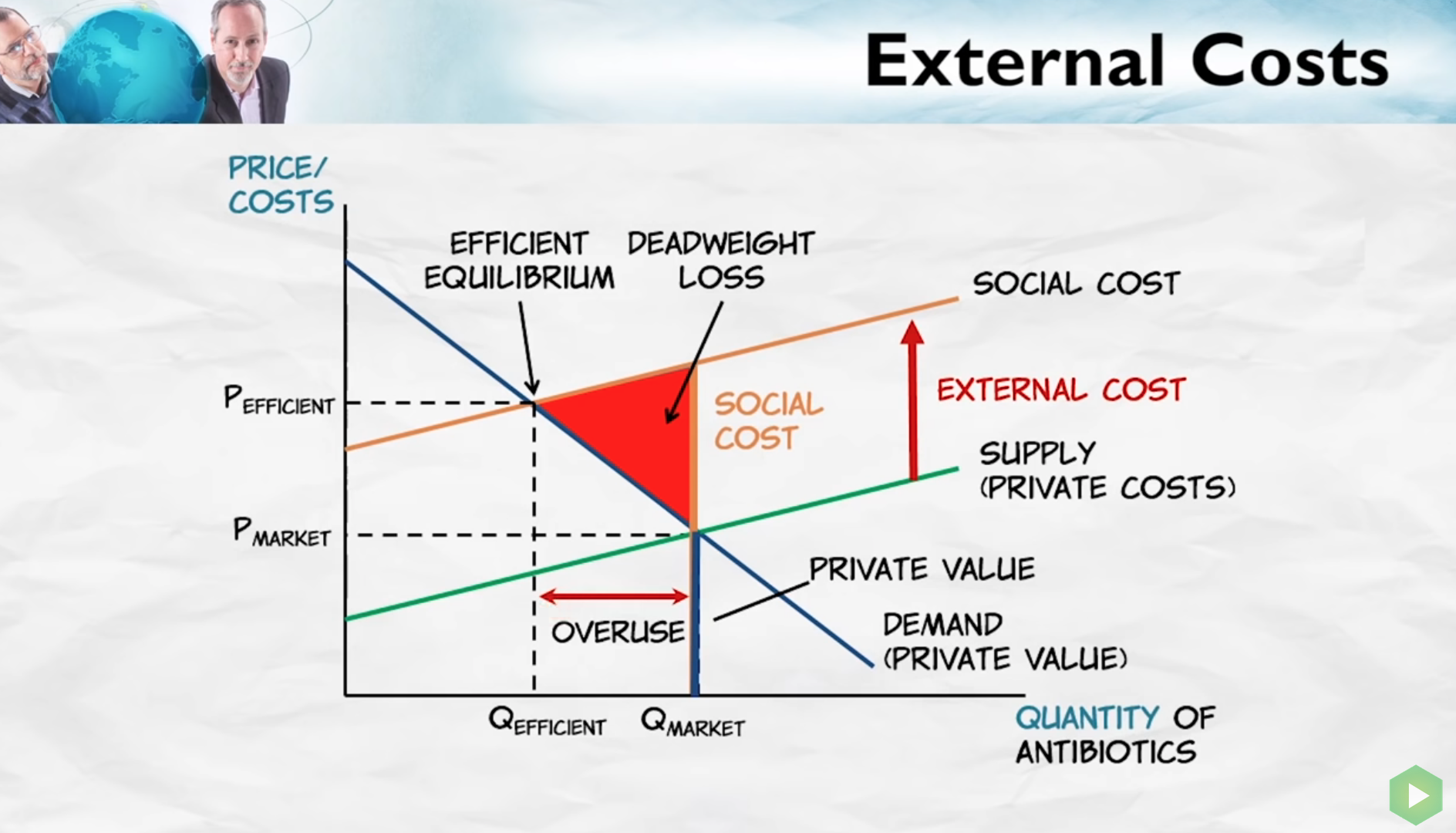Week 7 Principles of Economics Microeconomics

Externalities
Costs of trade
- Private cost - Paid by the consumer or the producer.
- External cost - A cost paid by bystanders, by people other than the consumer or the producer.
Social cost of trade = Private cost + External cost.
Externalities deal with external cost.
Market does not maximize social surplus.
External Costs

When there are external costs of trade, output should be reduced. Who bears the cost is irrelevant.
Solutions
- Pigouvian Tax
- For example tax on cigarattes.
- Tax increases price and reduces output.
- If tax can capture external costs, then it can be great way to reduce output.
External Benefits
Benefits to bystanders.
For example - Vaccine. They protect not just the consumer of the vaccine, but bystanders whose risk of infection is reduced.
In case of external benefits Social Value > Private Value.
Pigouvian Subsidy
- In case of external benefits, output should be increased.
- One way to achieve that is by subsidies trades.
- This is known as Pigouvian subsidy.
Solutions to Externalities
Command and control
Example: Government imposes strict electricity consumption ceiling on washing machines. But washing machines that use less electricity clean less.
This kind of command and control is rarely efficient. Government does not have all the information on how consumers value use of electricity. So if instead government imposes taxes on electricity, each consumer will reduce their own uses based on their individual information. Overall this will lead to lowering electricity consumption and reducing pollution.
Coase Theorem
Example -
There are bee keepers who rent out their bees for pollination services. This market place works because
- Low transaction cost.
- External benefits can be contained, bees travel less.
- Property rights are clear; Bee keeper owns bees, farmer owns the farm.
Pollution
- Unclear external cost. How much? Who and Where?
- Unclear property rights.
Coase Theorem - If transaction costs are low and property rights are clear, private trade will ensure efficient market equilibrium even in case of externalities.
Coase theorem suggests that a new market can be created to trade externalities as long as property rights can be defined.
Example
Tradable allowances and pollution
- To reduce pollution a fixed number of carbon credits are created.
- Firms can buy these credits for certain amount.
- Firms which can lower carbon footprint at lower cost than cost of credit will do that.
- Firms which can not, will continue to pollute by buying unused credits.
- But due to limited supply of carbon credits, least valuable uses of carbon are removed from the system and this reduces pollution more efficiently.
Incentives
In case of external benefits, incentivising consumers will increase the total social benefits. For example a flu shot can be subsidised, hence more people get flu shot and this reduces cases of flu per year.